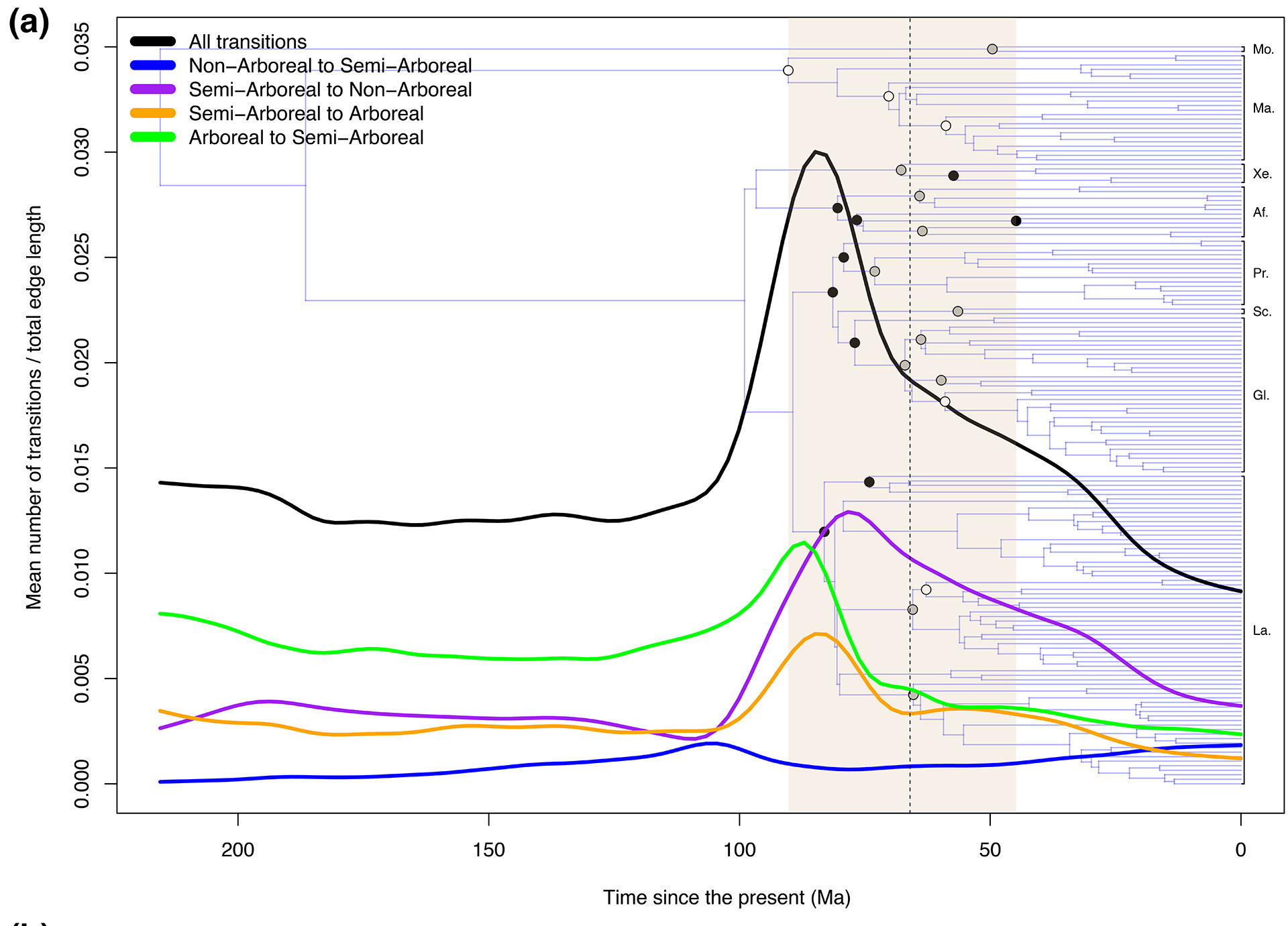
“Diversification” refers to the process by which a single ancestral species gives rise to a variety of descendant species that differ from each other in morphology, behavior, and/or other traits. This process is often driven by natural selection, which favors genetic variation that confer advantages in a particular environment. Bursts of diversification are often associated with major evolutionary innovations, such as the development of new morphological structures or ecological adaptations, that allow organisms to exploit new niches and environments.
The intersection between Macroecology and Macroevolution
Global paleobotanical and palynological data show that the K-Pg Chicxulub impact triggered widespread destruction of forests. In a paper we published in Current Biology, my co-authors and I suggest that ecological filtering due to the loss of plant cover across the K-Pg boundary selected against any animals committed to arboreal ecologies, resulting in a predominantly non-arboreal post- extinction fauna. Mesozoic adaptation to arboreality thus predicts macroecological patterns of Cenozoic diversification. Download Paper
My first paper on this topic focused on the potential impact of ecological filtering on arboreal birds in the Mesozoic. Cover illustration prepared by paleoartist Phillip Krzeminski.
Artwork by Phillip KrzeminskiDownload Poster
We later investigated the same hypothesis in mammals and discovered similar, albeit somewhat more ambiguous patterns. As part of this work, I developed a new tool for analyzing ancestral state transitions from stochastic character maps
I am currently examining these patterns across the Cenozoic diversification of frogs.
Modeling diversification through simulation
The application of statistical models to the study of speciation and extinction has revolutionized our understanding of macroevolutionary history. Recently, several studies have reported inverse latitudinal gradients in speciation rates, contrary to predictions from ecological theory, which posits that the latitudinal diversity gradient derives from increased speciation toward the tropics. In research currently in final prep, I investigated these global patterns using simulations to study whether and when the models commonly used to study patterns of diversification may provide misleading results. I have focused on identifying scenarios where a lack of biological realism concerning time-heterogeneous patterns of molecular evolution can drive pre-determined outcomes in statistical analyses of lineage diversification. Incorporating increased biological realism into these models, I show that global patterns reported in the literature across many taxonomic groups may be statistical artifacts. 2021 Seminar recording

